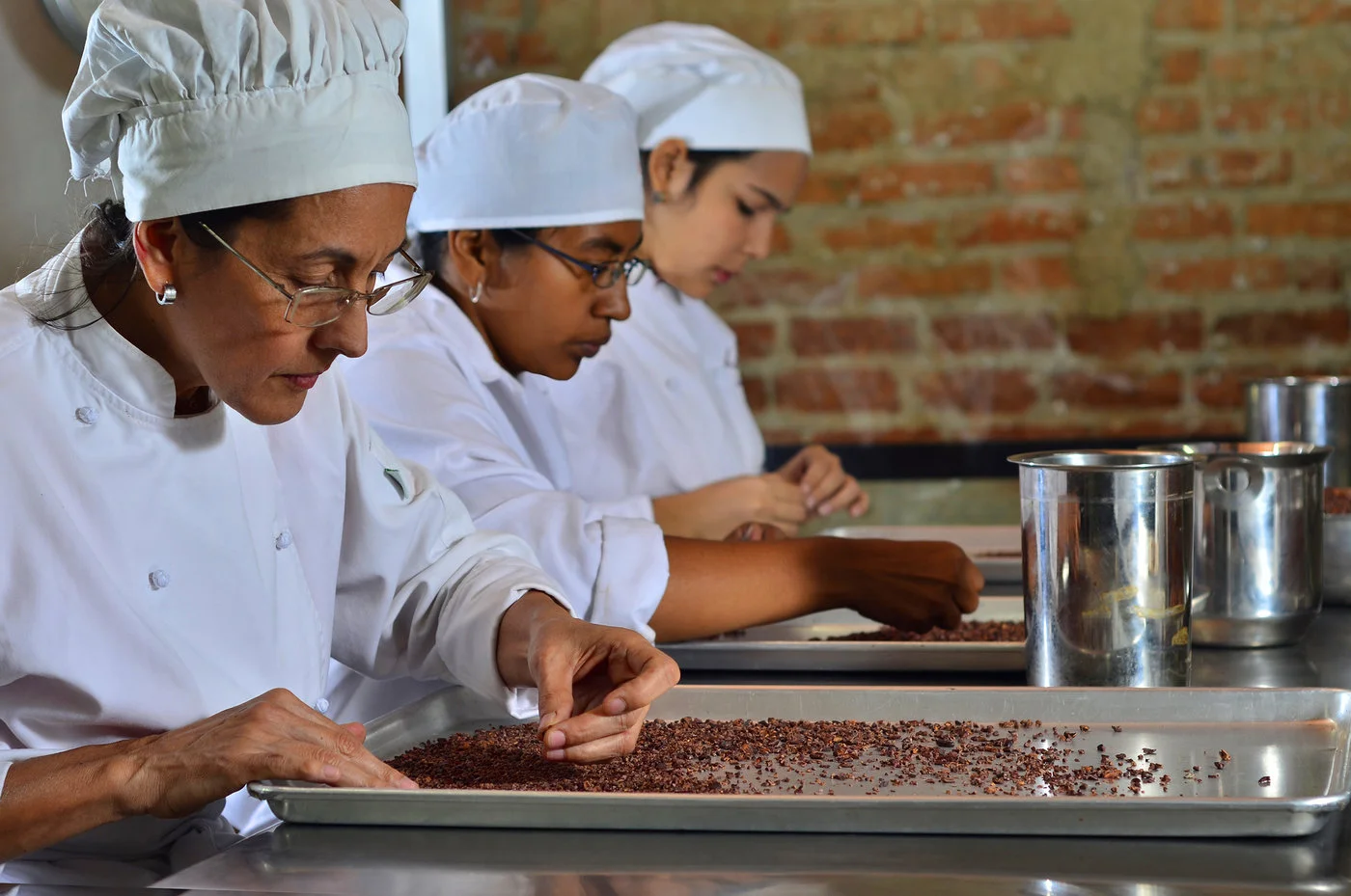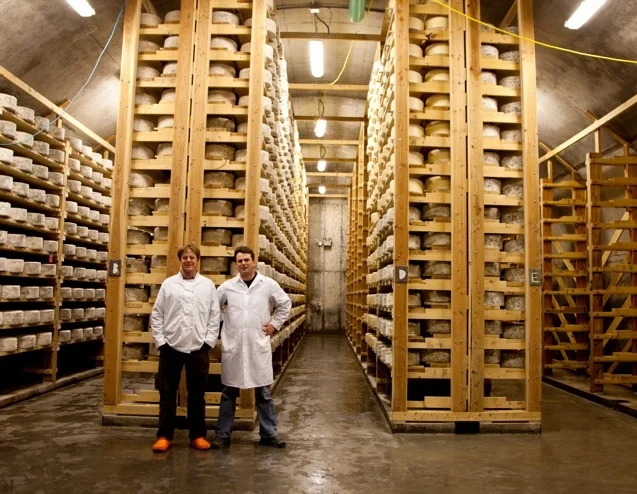Despite radical advances in technology, many companies still plan routes for their delivery trucks the same way they did a decade ago. Managers create itineraries the day before, and then hand printouts to drivers to follow or add them to the hand-held devices that their drivers carry at their hip.
Read MoreLast January, as one does, I pledged to eat better. Not one to phone it in, I adopted a meal plan with almost every vice crossed off the list. I blame Instagram, which was where I first spied the hashtag #Whole30, along with hundreds of iPhone-perfect images of delicious-looking food. If I ate nothing but whole, unprocessed foods for 30 days, the Whole30 program promised, I would have less bloating, fewer cravings, better sleep and more energy.
Read MoreAs helicopters rescued people and their pets off Atlas Peak, in Napa, Calif., one night in October, Christian Palmaz was nearby battling his own flames. His task: to save his family’s winery, Palmaz Vineyards.
Read MoreEven when things aren't going your way, there's chocolate: a universal balm if ever there was one. While cacao beans –– the precursor of a chocolate bar –– grow in many places, one country where you can find superb specimens is Venezuela.
Read MoreMark Spitznagel is a guy who gives new meaning to the term “gentleman farmer.”
In Northport, Mich., among rolling hills and barns that evoke the mountains of Europe, Spitznagel and his wife Amy are producing French-styled goat cheese such as Idyll Gris, which features a silvery ash coating between fluffy light layers of fragrant goat cheese.
Read MoreDavid Yeung believes that meat is the new tobacco. But the long-time vegetarian and practicing Buddhist won’t try to get you to stop eating meat. He just wants you to consider eating less.
That’s what he’s trying to do with the citizens of Hong Kong, who collectively have the highest per-capita meat and seafood consumption in the world, according to a 2015 study by Euromonitor. (Surprising, right? We’ll give you a moment to digest.) His life’s mission is to get the citizens of our planet—particularly his home city—to cut out eating animals at least one day a week. And it’s working.
Ample Hills Creamery Inc. is known around New York for its indulgent, over-the-top ice creams such as Salted Crack Caramel and Chocolate 3 Ways. Around the country, it’s recognized as the official ice cream of the Star Wars film franchise, and whose limited-edition Dark Side and Light Side flavors, released in conjunction with The Force Awakens, sold 40,000 pints online.
Read MoreFor the past year and a half I’ve been buying a medical device from Italy that has improved my life immeasurably. It wasn’t easy: I roped in a good friend who had moved to Milan to buy the device and ship it to me because it wasn’t yet available in the States. And it was expensive: over $1,600 a year.
But my black-market purchase helps me manage my Type 1 diabetes without the need to draw blood from my callused fingers 10-plus times a day to track my glucose level, a ritual that had been an unpleasant part of my life for decades.
Read MoreRosé has evolved into the most clichéd of beverages: it’s a drive-thru, a pool party, a hashtag. At the same time, it's become one of the most powerful forces in the beverage category. It’s now a third channel of revenue for wine makers, retailers, and distributors, elbowing its way alongside the traditional categories of red and white.
Read MoreWhen you walk into a cheese shop to buy a wedge for your next party, your go-to person behind the counter is the cheesemonger. In France, where cheese is king, this role is crystal clear. In the U.S., it's a bit hazy.
Read MoreOn the face of it, Camembert doesn't seem like an endangered species. In fact, the soft-ripened cheese seems like the opposite: Three hundred and sixty million wheels are produced annually in France.
Read MoreYou may have overlooked this tiny organism until now, but 2017 might very well be the year of algae. Don’t believe it? It’s already in baking mixes, cookies, milk, nondairy creamers, vegan eggs, salad dressing, ice-cream, smoothies, and protein powders, to name a few. Soon, the extract from spirulina––a form of microalgae––will provide the color for blue M&Ms. Prefer the green ones? It can do that, too.
Read MoreOverproduction is built right into the business model of most bakeries. While we devour much of what is made, huge quantities of perfectly good grain are tossed. But Tristram Stuart, an Englishman who began battling food waste 15 years ago, long before it became a popular cause, discovered a way to turn bread, an inexpensive product with a short shelf life, into one that’s long-lived and lucrative: craft ale.
Read MoreWine is usually a fun topic, but in the Golden State, the fourth-largest wine-producing region in the world, it’s also big business: 85 percent of domestic wine comes from over 600,000 acres of grapes grown in California. Operating at this scale means the wine business must also consider land stewardship. Two of the state’s biggest and best-known wine counties—the neighboring communities of Napa, which has more vintners, and Sonoma, which has more growers—are both working toward achieving goals of 100 percent sustainability within the next few years.
Read MoreThere’s no sign announcing that you’ve arrived at Jasper Hill Farm, a creamery in the Northeast Kingdom, as Vermonters call that end of their state, but you can’t miss it. The main barn is painted midnight blue with a giant cheese moon and cows floating happily in space. Blasted into the hillside is a concrete bunker with seven cheese caves radiating from a central core.
There’s one other surprising detail: a modern two-room laboratory filled with microbiology equipment and staffed with scientists.
Read MoreAutumn Stoscheck has been making hard cider for years but still considers herself a beginner. “The truth is I’ve made cider 14 times. That’s not very many,” the founder of Finger Lakes–based Eve’s Cidery says. “I’ve dumped thousands of gallons and killed hundreds of trees.” But ask any local cider aficionado what they drink, and chances are they’ll point you in her direction.
Read MoreAs soon as I left the French vineyards, I dreamed of Spanish wine. No more big reds heavy in alcohol and residual sugar, transparent legs dripping down the inside of my glass. I yearned for whites––young, green, and herbaceous––local to the Spanish coast to which I was headed.
Read MoreWhen hosting a team of chefs from one of Spain’s top-ranked kitchens at your humble Cambridge restaurant, sometimes you need to expand your vocabulary.
That’s what Loyal Nine chef Marc Sheehan learned when Mugaritz executive chef Andoni Luis Aduriz and crew — eight in all — began working with him to plan a benefit dinner for Tufts University’s Jean Mayer Human Nutrition Research Center on Aging. It took place Sunday night and was the first time Mugaritz has done a pop-up in the United States.
George Tenedios, the owner of Fresh&Co, a small New York chain of fast-casual restaurants, is constantly on the hunt for new ingredients. He’s experimented with all sorts of odd meat substitutes, from homemade tempeh to Silicon Valley darling Beyond Meat. But even he was stumped by a photo of what appeared to be a tuna sushi roll—shiny, bright-red "meat" with sesame seeds dotting the top—but which he knew was made not from any fish but from tomatoes.
Read MoreYour morning tea—Matcha, Darjeeling, English Breakfast—most likely comes from far away. While there are a few dozen tea growers in the United States, the harvested leaves, many of which come from an evergreen shrub called Camellia sinensis, are not native to this country.
Read More



















